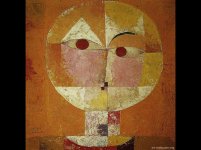I can't comment on the role of aesthetics in GD decks, since I don't have many of them myself and have only just looked at online previews.
What I can say is that I'm really picky about the artwork in my decks, it has to look good in some way otherwise I just get unfocused and get put off by the flaws. Most decks I've enjoyed haven't had 100% perfect artwork, but their flaws were such that I could still appreciate them.
I tend to like elaborate decks with lots of tiny details on each card, but one thing I've noticed is that this doesn't always mean artistic skill. There are some decks with artwork that must have taken a lot of time to make, but which looks like someone in a beginner's life drawing class would do, and which looks rather wonky in an annoying way. I haven't found many simplistic decks I liked but I assume the reverse would be true for them -- wsome simplistic decks may look genuinely nice and the sort of thing I could love.
That's also true of art in general, I think. It happens too often that artwork that is more simplistic because it's abstract or because it's in a more untrained style ends up being an excuse to not put that much effort or skill into it. However, there are many good pieces that fall into those categories but their simplicity is deceptive, because once you look closer, you can see how it's beautiful or thought-provoking or downright awesome.
Nice post. Its very direct and to the point, yet touches on the subjective as well.
Like, I fully admit to detsting the Thoth Fool card. YUCK. That face, that gaze, the pug nose, the green giant costume, the (in my opinion) ridiculous pointed shoes. To me its a case where they murdered one of the most important cards - regardless of what meaning they intend to convey. Yogiman mentioned somewhere that Crowley viewed the Fool card of the Marseilles deck as infantile. So it would appear, subjectively to me, without studying his attributions or descriptions of the card, that Crowley feels the Fool should be repulsive, repellent, somewhat threatening and ominous (and reminiscent of the Joker from Batman comics or something). My reaction is thats great for Crowley, but to suggest this energy is more important or true than the utility and flexibility and openness to multi-layered meaning contained in the Marseille image to me does enromous violence to the original tradition, which would appear to be only partially understood. Bear in mind, please, that this is
my subjective reaction to this card, based on personal aesthetics and preferences, and how this can affect people and their relationship to the cards. Its far from arbitrary or secondary/tertiary importance.
Also your post imo, relates to the subject of mastery that I have been blabbering about. Conscious reduction of detail, realism, or effort is in large part discernable from inability to produce these things. To be fair, its not inherently necessary for one to BE able to produce more realism or detail, or work harder in order for them to reduce or abstract conceptually and then represent what they are trying to say with whatever skill or means they have. Still, sufficient clarity of purpose would needed for communication of the desired message.
If we compare the simplicity of Cocteau's vs Rebrandts drawings, it should be apparent that the difference in "realism" and *apparent* effort is subverted by Cocteaus evident skill, training and grasp of capturing the human form. The various intents and purposes between the two artists work comes immediately to the fore, not ability.
Cocteau
http://www.google.ca/search?q=jean+...zwYHIDQ&ved=0CAkQ_AUoAA&biw=768&bih=928&dpr=1
Rembrandt
http://www.google.ca/search?client=...1.3.0....0...1c.1.32.img..5.4.948.3otlFuEn680
Or if we compare the color work of Mondrian and Monet, while one may be easier for an untrained eye to see as "superior", with just a little context and background one realizes what the Bauhaus were about, what they were pursuing and expressing. The difference in intent and purpose behind these artists work comes to the fore and makes comparing skill irrelevant, and one will immerse themselves in the world of either artists vision as they please, but for likely different reasons. But either way, both artists work reflect their mastery.
Mondrian
http://www.google.ca/search?client=....5.0....0...1c.1.32.img..3.5.1587.EaMfH6tRL4s
Speaking of color systems and the Bauhaus:
http://www.ehow.com/about_5378257_bauhaus-color-theory.html
Monet
http://www.google.ca/search?client=...1.3.0....0...1c.1.32.img..2.3.710.UB_acM_6O9A


